Brazil: Exploring Rio de Janerio’s gay scene and a geniune eco lodge in the rainforest
"The whole city treats the beach like their living room"
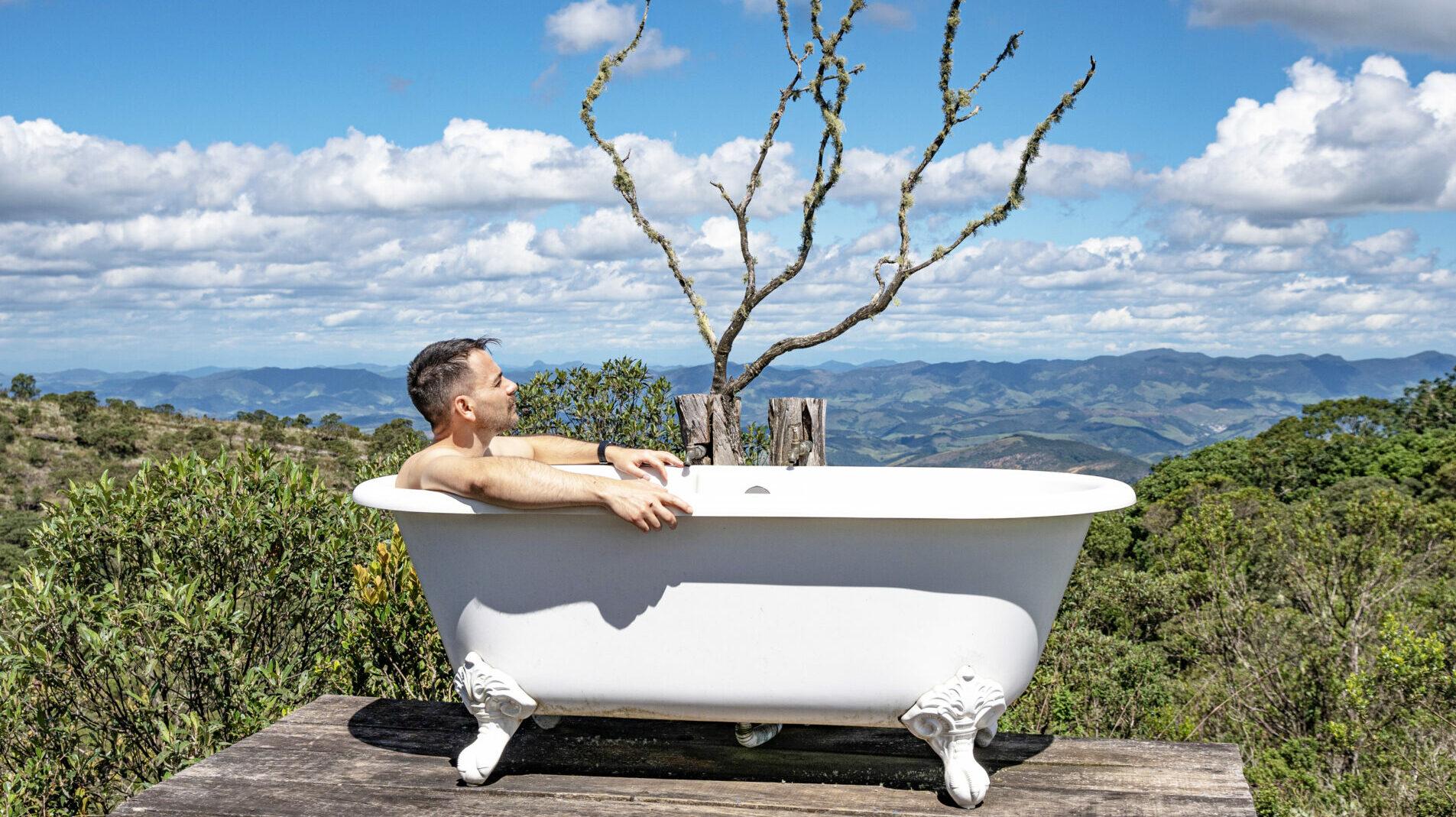
Sitting in an al fresco bathtub on a mountaintop overlooking an enchanting landscape is not where I’d thought I’d find myself on a trip to Brazil, but here I am within the Ibiti Project, a 6000-hectare area which dwarfs the adjacent Ibitipoca State Park. This is the passion project of Renato Ribeiro Machado, who in 1984 began purchasing the land — which had been turned into barren pasture — so that the process of reforestation could begin.
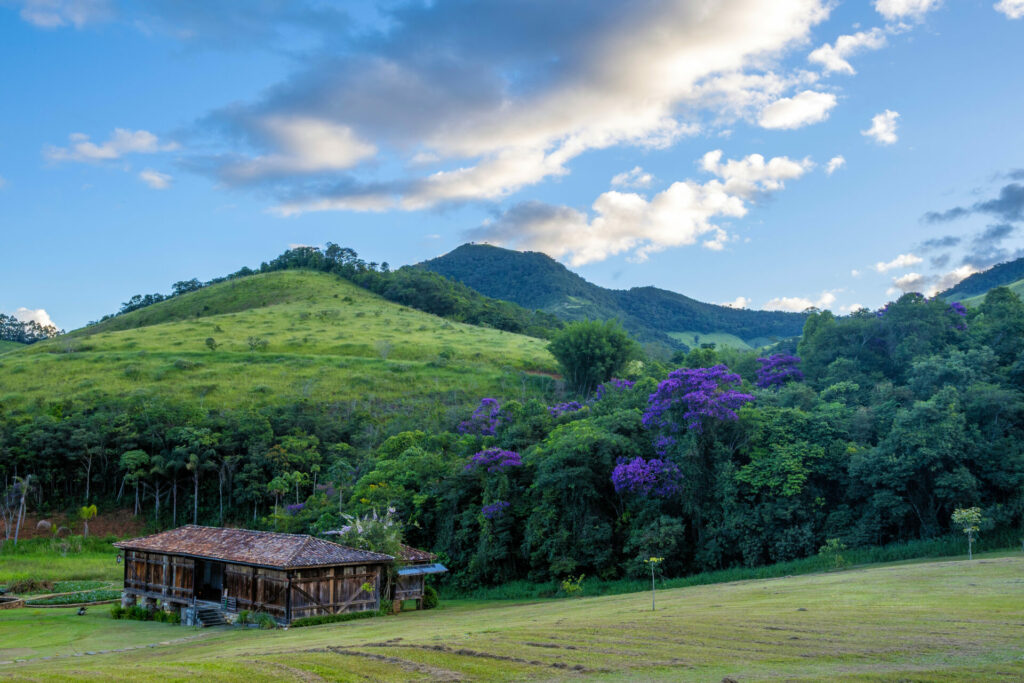
To be honest, the Ibiti Project was not my first, or even second, choice of destination to twin with Rio de Janeiro (more of that later), but the travel specialists at Luxtripper convinced me this would be the best option for the length of my trip and promised that it is a special place. And they were right.
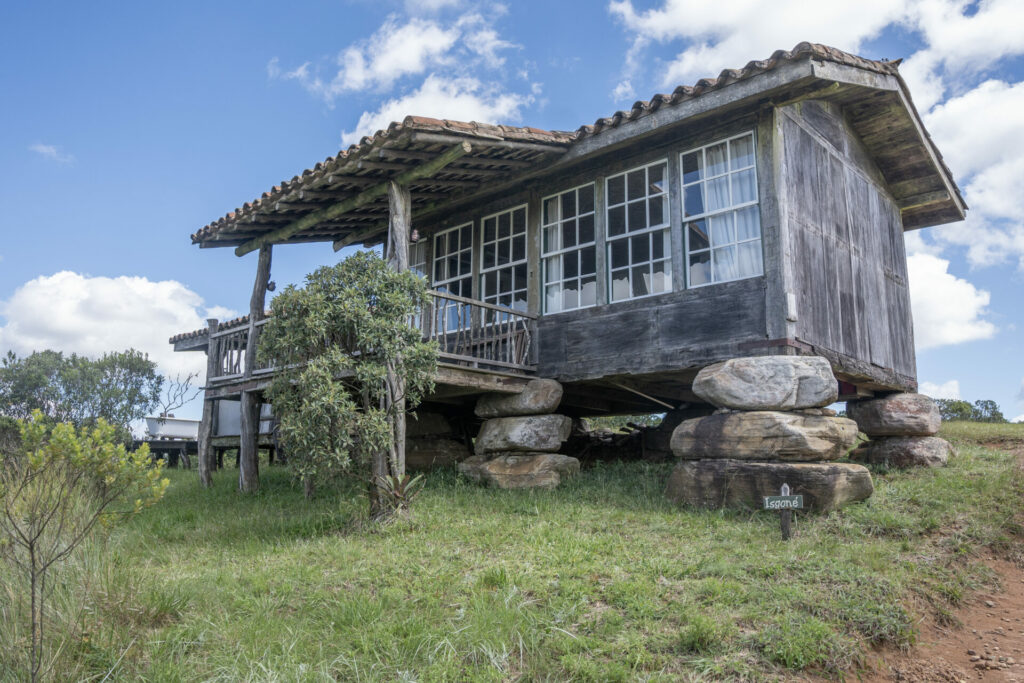
The bathtub is part of Isgoné Loft, one of three private lodges, the other two being even more remote than this 1,500-metre-high getaway. My partner Leigh and I are stopping
here on a 15km hike with our guide, who lets us explore the rustic cabin and the deck leading to the four-claw tub, where Leigh takes photos of me having a faux soak — the scene is
Boyfriends of Instagram gold.
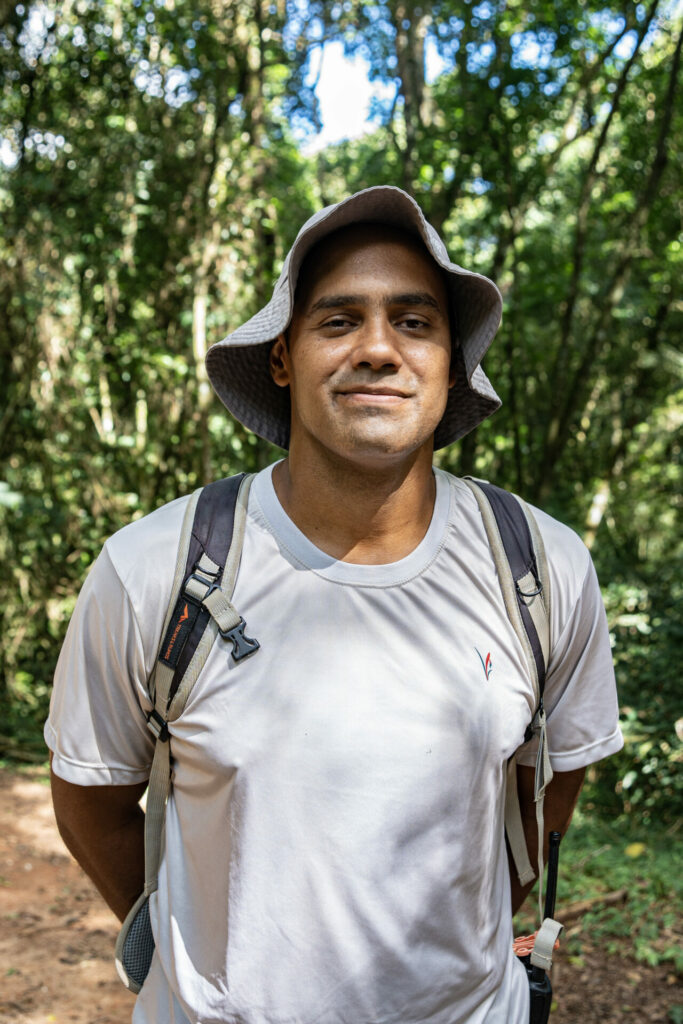
On the way up the mountain, we step over horned devil frogs, cute red-faced grasshoppers land on us, and iridescent blue butterflies flutter about. But it’s the welded sculptures of seven human figures, each up to 30 feet high and weighing between four to six tons, that really take our breath away. The seven pieces by Californian sculptor Karen Cusolito were purchased and shipped from America and installed by the artist on a mountain slope overlooking a verdant valley.
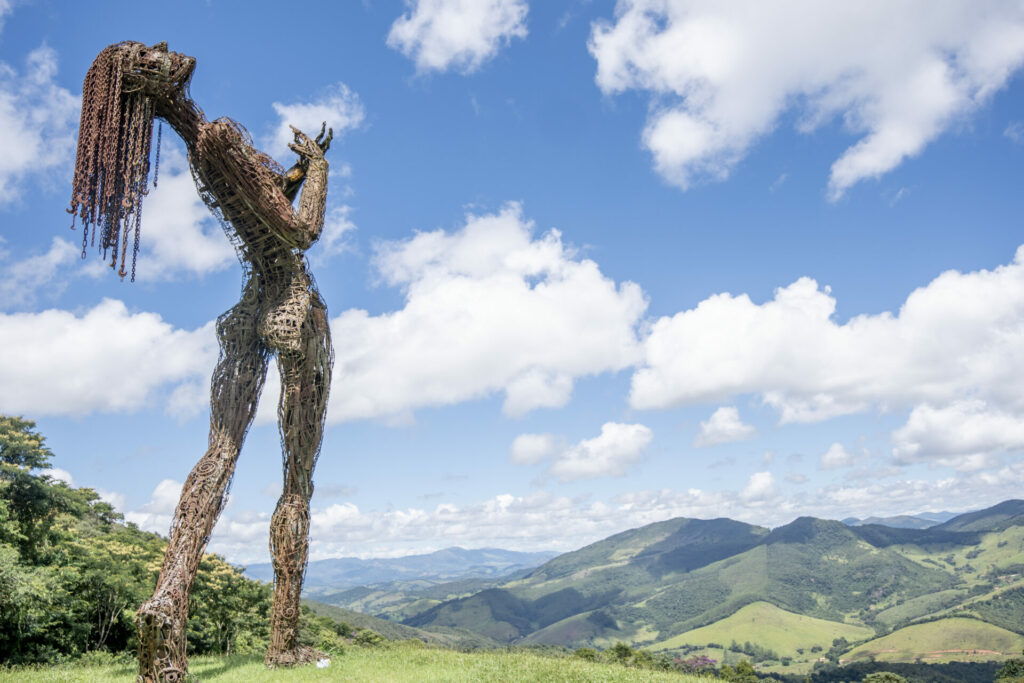
We stop to visit some tumbling waterfalls before arriving back at the eight-room Engenho Lodge, where we are staying. The hotel, which opened as the first guest property in 2008, is styled on the farmhouses of the local area and has a colonial feel with a porch on the side of the building. Our room is large with high ceilings and a bathroom with a wet-room shower next to a bathtub. Behind the property, there is a sauna, Jacuzzi, covered open-air fitness room and, to the side, the Raízes Spa, where we join the morning yoga class.
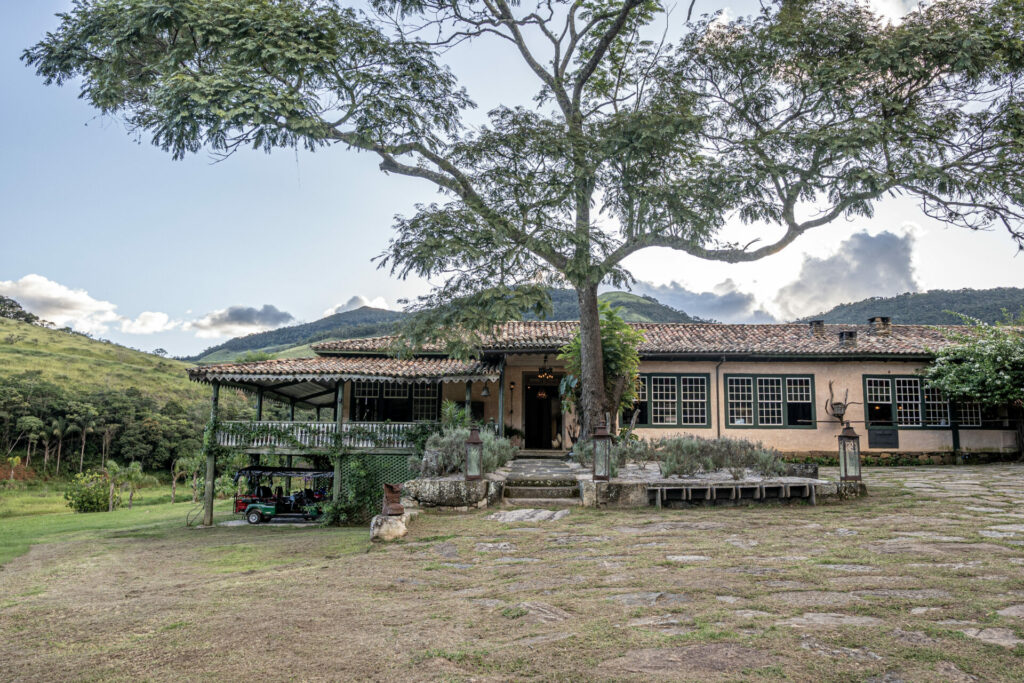
Breakfast and lunch in the restaurant are buffet-style with many dishes laid on a wood-burning stove to keep them piping hot. And in the evening, there is no á la carte menu; instead, we are brought dishes designed by the chef — choice can be the enemy of decision anyway and this style of service cuts down on food waste. I also stick my nose in the kitchen after hearing it is styled like the one in Pixar’s Ratatouille and, as promised, it has a big stove identical to the one in the film.
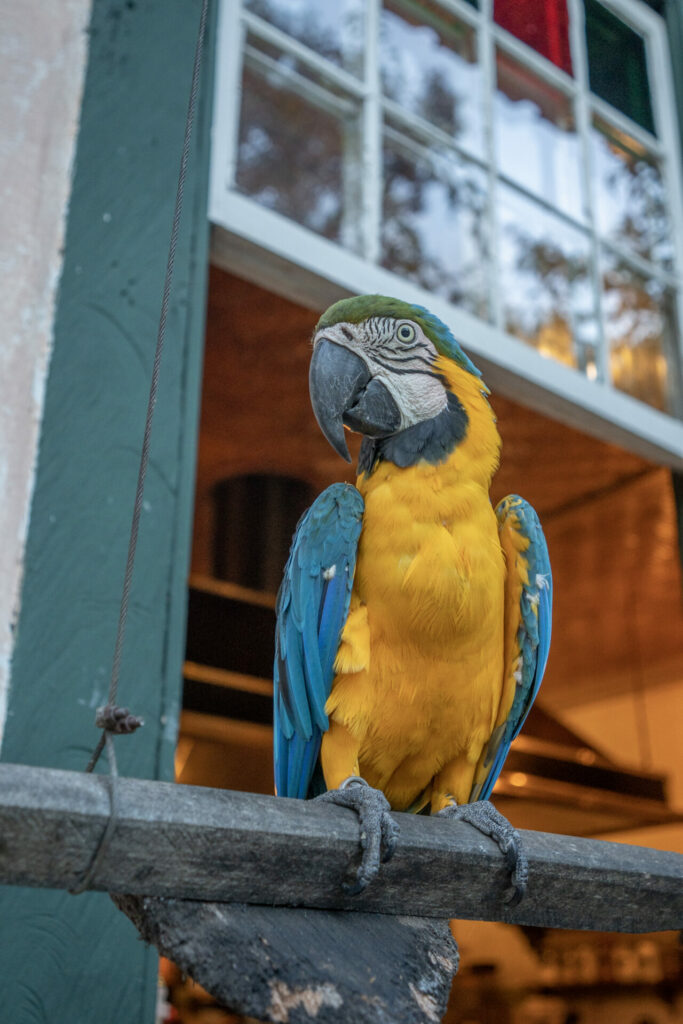
Around 300 species of bird have been spotted in the area, but the hotel’s three pet macaw parrots are the ones we get the closest look at. Their birdhouse is next to the restaurant and on one morning a flash of feathers swoops in to join us for breakfast before being cheerfully shooed away by staff.
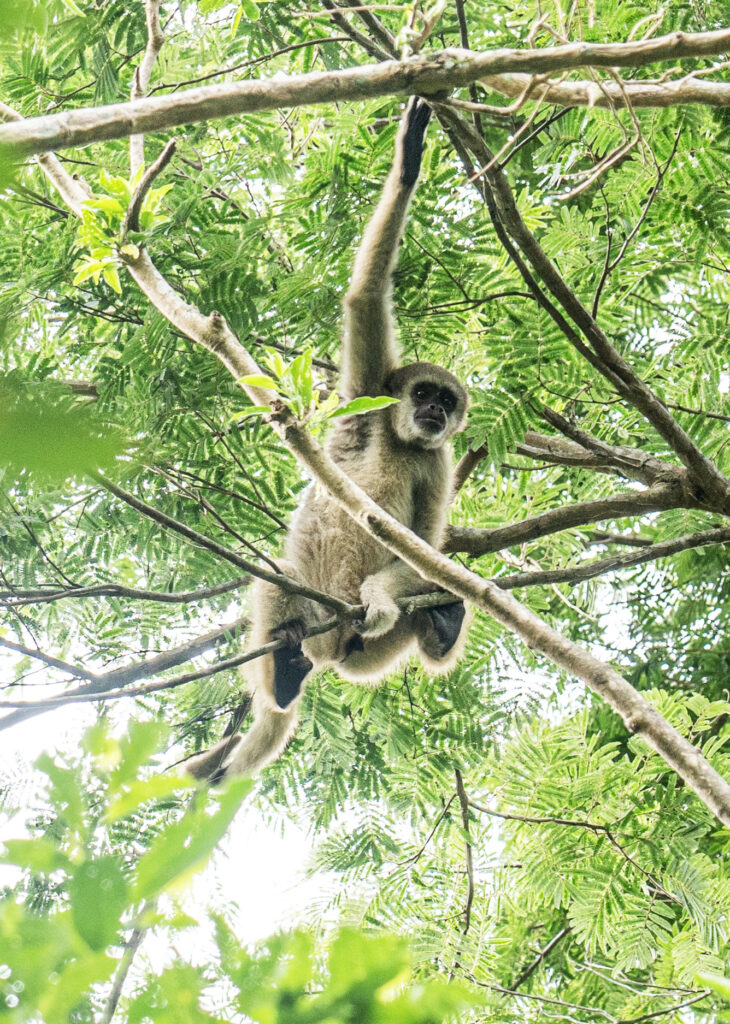
Activities include excursions on the fleet of e-bikes, horseback riding and dips in the Black Lake, but what we are really excited about is visiting the Muriqui House. Muriquis, or woolly spider monkeys, were once prolific here and although the Ibiti Project has had great success in transforming the land back into Atlantic rainforest to give them their habitat back, the refaunation programme is not that simple.
We arrive at the fully fenced, four-hectare enclosure and meet one of Muriqui Instituto de Biodiversidade’s biologists, who guides us through a trail within the monkeys’ home. It’s not long before we spot a few adult muriqui hanging from their tails high up in the tree canopy. They are the biggest primates in the Americas and the goal is to grow a troop of eight monkeys into two groups of 30, so they can be released. This will take many years; so for now, they live in a fenced enclosure to protect them from the jaguars that have been spotted in the area.
Monkey business over, our luggage is loaded into a Land Rover and we head down to Mogol, a village within the Ibiti Project that has its origins in the gold rush. The lack of work for the younger generation meant it had been in danger of becoming a ghost town, so Machado, who knows you can’t fix the environment without also engaging and supporting the local community, worked with his team to create a village hotel concept. There are now five houses that guests can hire, and it has clearly been a success. Machado even has a modest house of his own here, though sadly, he was away during our visit.
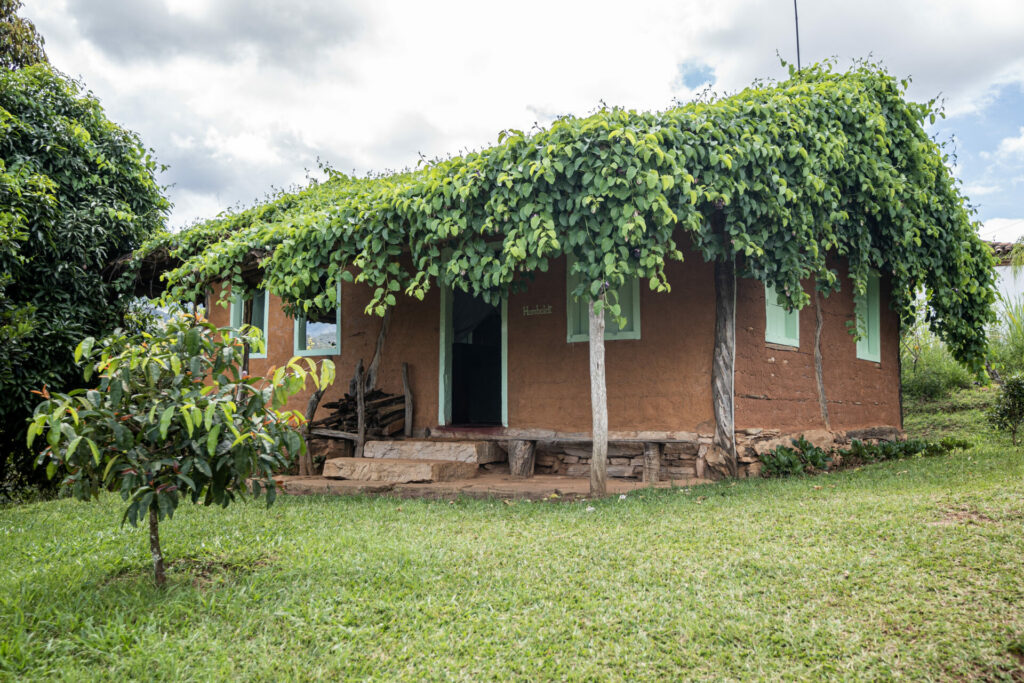
We stay in Humbolt Loft, which was built using the traditional wattle and daub technique and has rough orange exterior walls and a roof covered in green foliage. Inside, it’s open-plan heaven, complete with a small kitchen-cum-living space and a big bed overlooking the balcony which has two hammocks and a wood burner.
A door next to the bed opens onto a tiny bridge leading to a bathroom on stilts. The best bit is the powerful rain shower with glass doors framing views of the vibrant green vegetation and hills beyond, while the water flows away down simple holes in the wooden floor. I love it. We are given the chance to tour several of the other houses, but ours remains our favourite. There are larger options for families, plus there’s a Freud house which has been decorated to honour the father of psychoanalysis — we are told the plethora of penis figurines in the bathroom can be a shock for some.
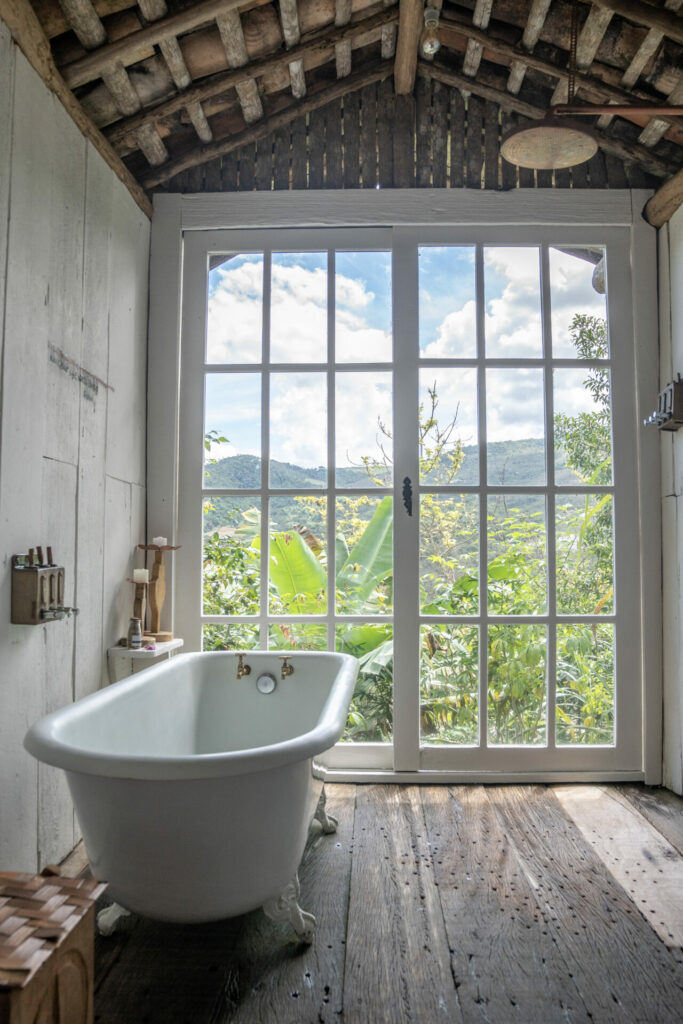
In the middle of the village, there’s a church with a reception and large café next door. On the lower floor is a gym, an impressive cinema with comfy reclining leather seats that’s free for guests to use, and a spa, where we both have an amazing massage.
The town’s restaurant is vegetarian and every meal we eat there — even breakfast — offers a tasting menu of several courses. It is honestly one of our favourite restaurant experiences in years with its garden right outside, a completely open kitchen and the friendliest staff imaginable.
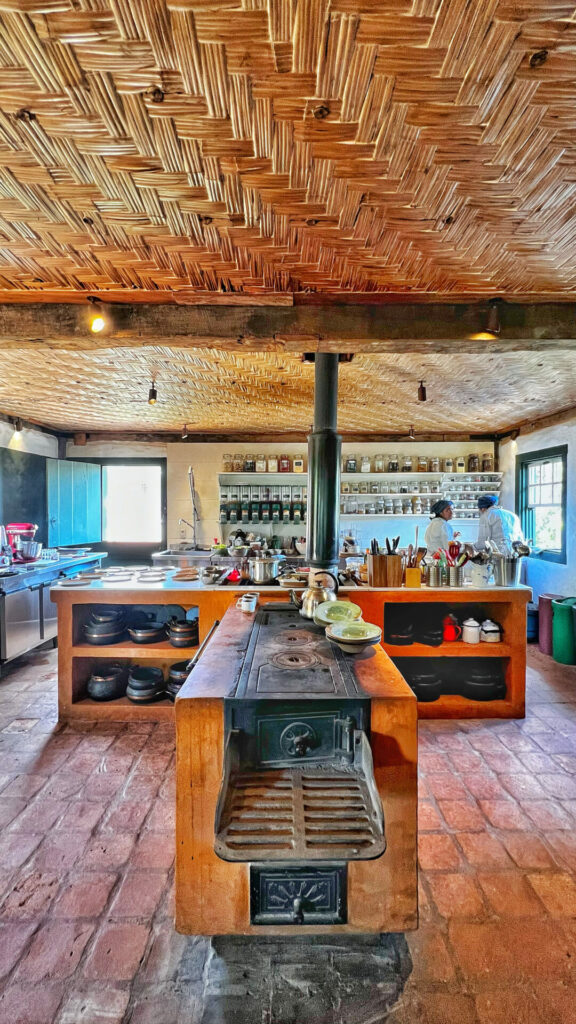
During our visit, we drop in on some of the village’s projects, including the Life School, which provides 12 local kids up to the age of 10 with free education, as well as a preschool which cares for two more youngsters.
The village is also home to two tapirs — the odd-looking herbivorous mammals with short, prehensile nose trunks — that were rescued and which they are hoping to release back into the wild.
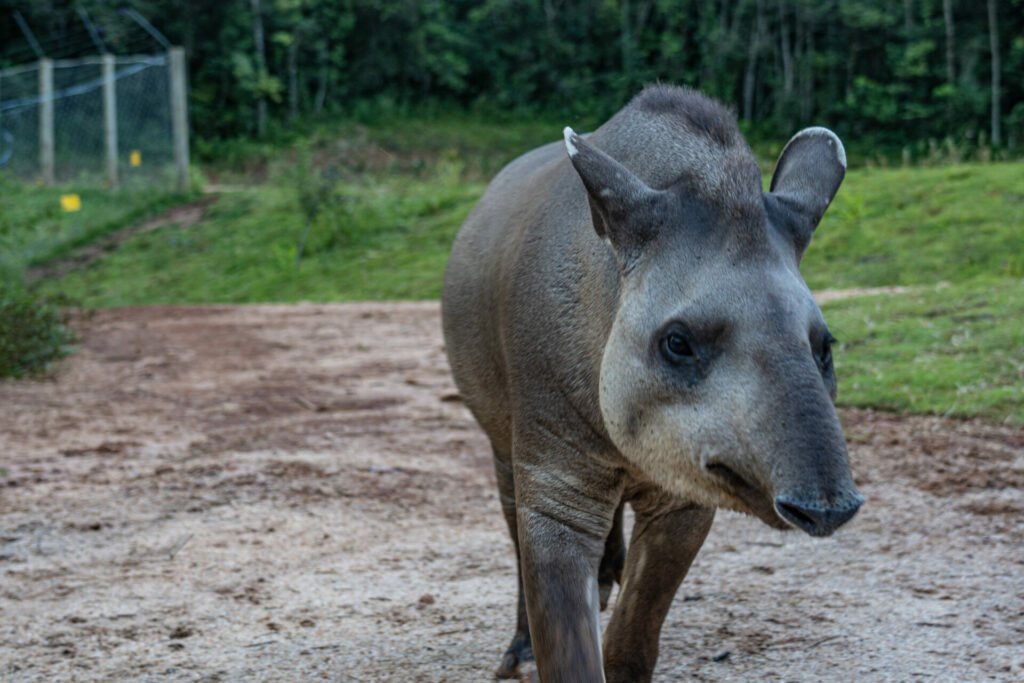
Before we leave, we take another guided hike around a circuit of amazing waterfalls. Ibitipoca is one of Brazil’s most popular state parks, but this project is three times its size, with over 300km of trails with dozens of waterfalls, viewpoints, lakes and caves, so we have not even scratched the surface. Although we would love to stay another night, we have to move on as a vegan festival is taking over the village. As we leave the Mantiqueira Mountains for our four-hour drive to Rio de Janeiro, we are so glad that we visited the Ibiti Project — a shining example of regenerative tourism, it really lives up to its green credentials.
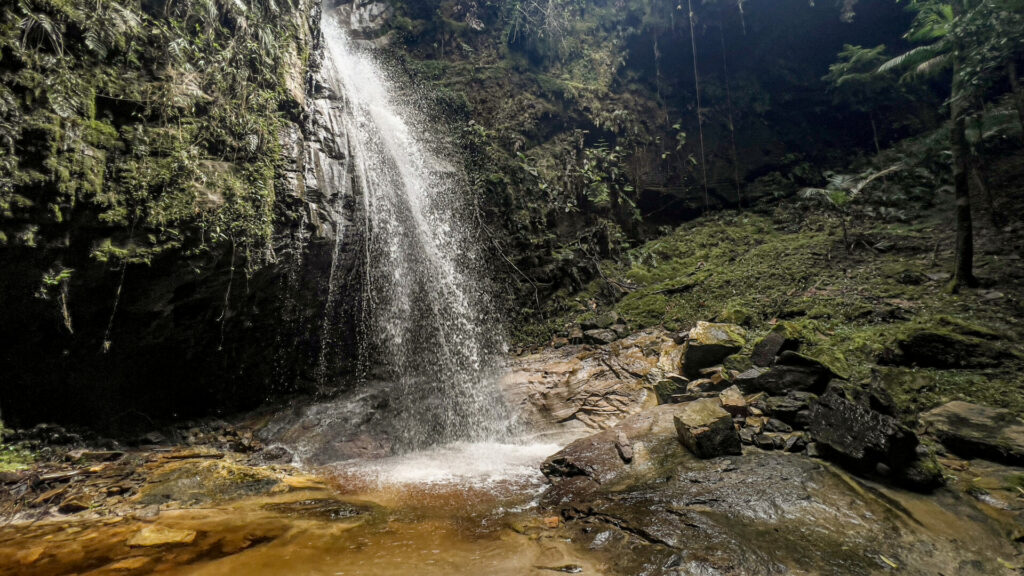
Brazil has suffered much under the presidency of Jair Bolsonaro, a homophobic, transphobic racist who encouraged the destruction of Brazil’s rainforests. Thankfully, former incumbent Luiz Lula da Silva was re-elected as president this year and has already promised to reduce deforestation to zero by 2030 — a bold declaration, but one that is very much needed. He has also made Brazil’s LGBTQ+ community feel safer than they ever did under Bolsonaro.
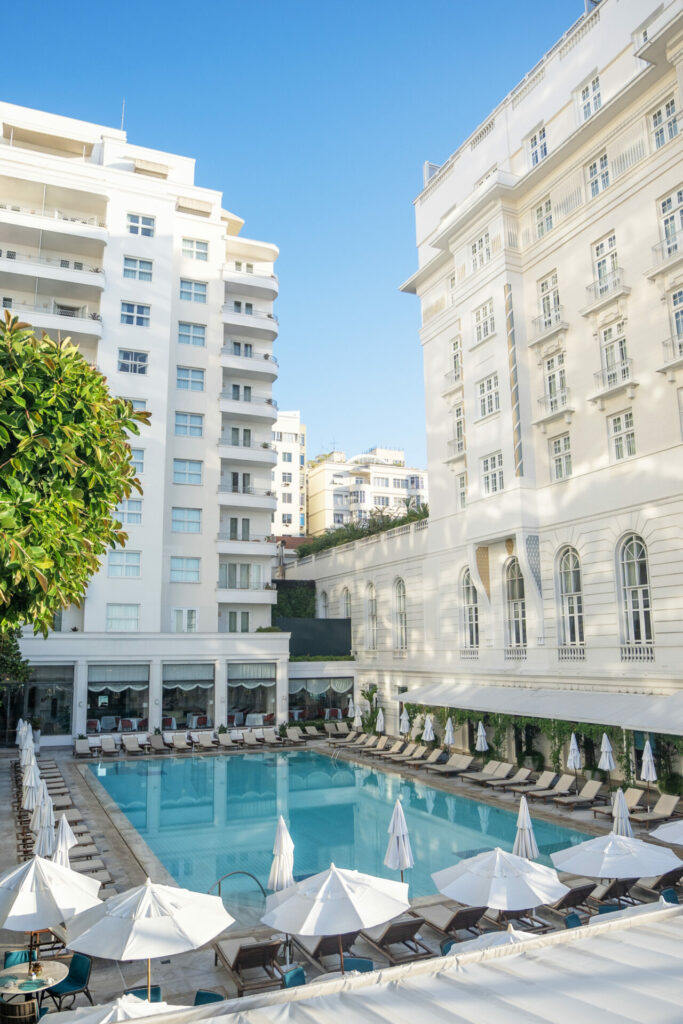
Our first hotel stay in the former capital of Brazil cannot be further from the rustic charm of Ibiti. The Copacabana Palace, a Belmond hotel, is the grand dame of the city’s iconic beachfront and is celebrating its 100th anniversary this year. Despite its age, our room is bright with antique landscape paintings of Brazil adorning the white walls and large windows looking onto Copacabana Beach. Facilities include a large, well-equipped gym and an elegant spa, but the beating heart of the hotel is the buzzing outdoor pool. Around it are three restaurants: Pérgula, where breakfast is served followed by lunch and an evening menu; Mee, the only Michelin-starred pan-Asian restaurant in Rio; and Ristorante Hotel Cipriani, which has held a Michelin star since 2019 thanks to chef Nello Cassese’s northern Italian fare.

The sun is blazing, so we cross the street to Copacabana Beach, where a couple of huge Pride flags are firmly planted in what was historically the city’s gay beach. Although we spot some gay men on the sands, it feels more like a family affair. Further south, on Ipanema Beach, we meet Bruno and João Victor, who are the couple behind Tesouros do Brasil, or Treasures of Brazil, a YouTube channel they started during the pandemic to promote Brazil to Brazilians, though they plan to expand into English-speaking content soon.
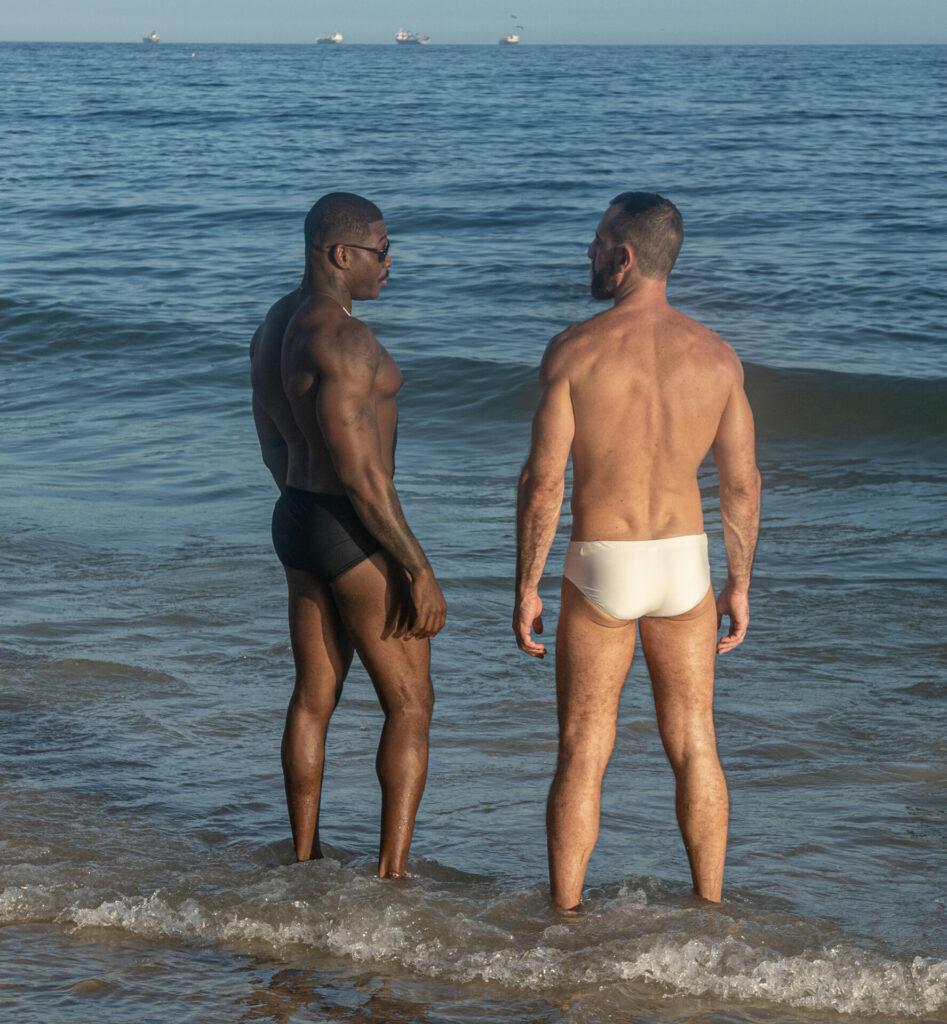
Bruno explains that local sunbathers pick their spot on the beach based on the barracas where food and drinks are sold, especially caipirinha made with the local cachaça alcohol, lime and sugar (never tell the locals it reminds you of a mojito!). If you’re looking for the muscle gays, Barraca do Luciano 64 is where they congregate.

Although Rio has a handful of gay bars, as the whole city treats the beach like their living room, it is here that gays mingle. If you are looking to meet someone, where better than on the sand where all the men — except us — are wearing sungas (Brazilian Speedos)? We meet some of Bruno and João Victor’s friends under a canopy of parasols to drink and watch the iconic sunset. As dusk takes hold, we leave the beach (each with a mild case of body dysmorphia) and grab a taxi back to our hotel to get ready to go out.
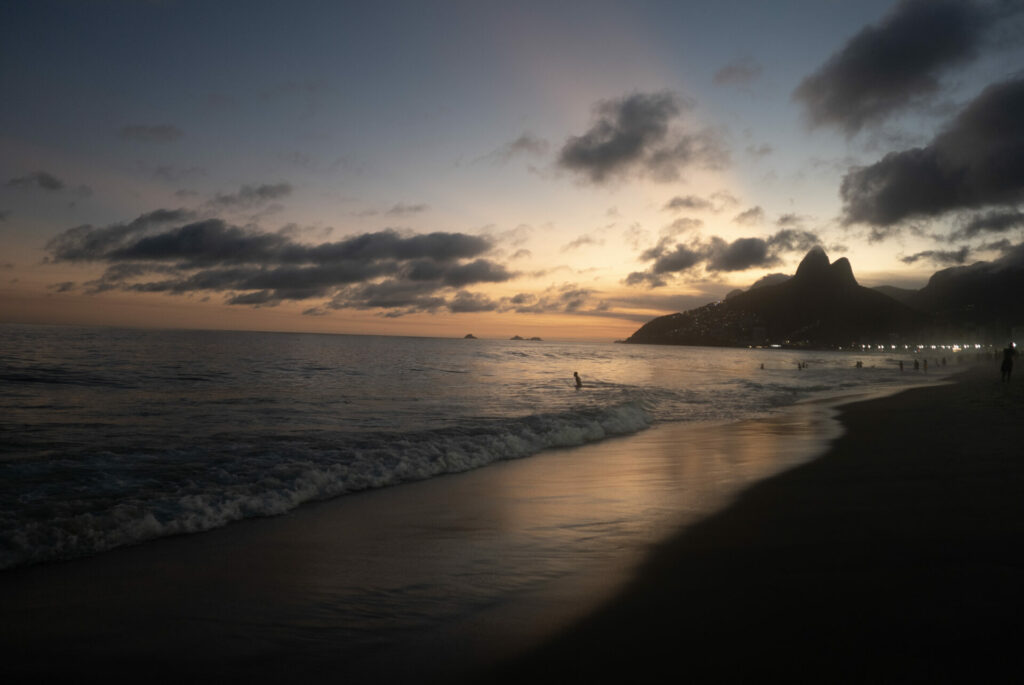
Our new friends take us to Sult, an Italian restaurant with Brazilian elements mixed into the dishes, in the Botafogo neighbourhood just north of Copacabana. It is relaxed fine dining with an open kitchen. After polishing off our rich pasta dishes, we walk around the corner to Arnaldo Quintela Street and a row of bustling bars where people are enjoying the warm night air, cocktails in hand.
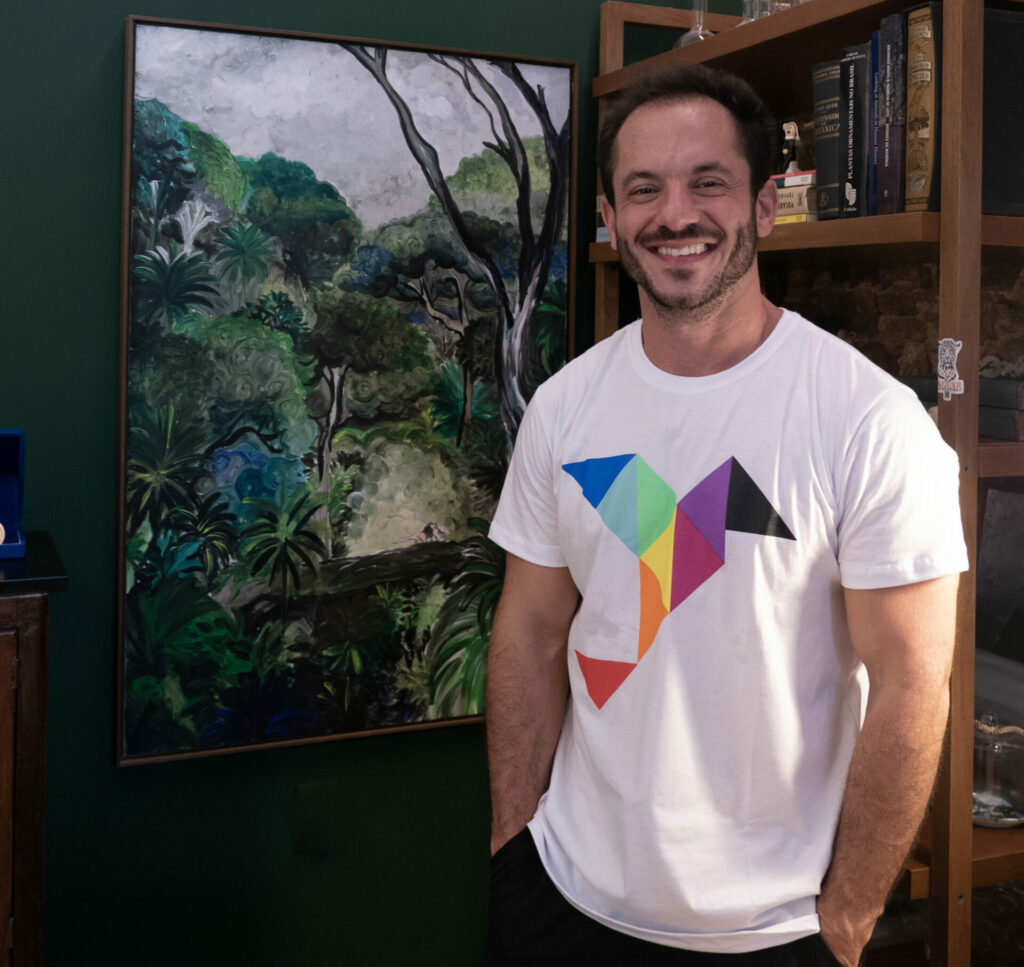
The following day, after breakfast next to the Copacabana’s pool, Bruno and João Victor take us to meet their friend Roched at his NGO Instituto Vida Livre, or Free Life Institute, where he takes in injured wild animals. He has been helping rehabilitate these creatures since 2015, and the sanctuary we are visiting opened in 2021 with the help of the NGO’s celebrity supporters and 250,000 Instagram followers.
Rehabilitating these creatures is Roched’s life’s work, and he says he has helped about 2,000 animals, with 200 animals coming in each month. Walking past his office, we enter his menagerie, where our first encounter is with Marcelinho, a capuchin monkey who lost both its arms after being electrocuted and now needs a lifetime of care. Roched tells us that just a few days ago a young sloth, which some kids had attempted to steal from a state park, was released back into the wild after receiving some care here.
We move on to the birds, of which there are many: toucans, owls, small songbirds, and even eagles. There is an operating room and on the ceiling of another is a huge, circular mural of animals with a hole in the centre — we are told that it was originally a skirt painted by Roched for one of his legendary Carnival drag outfits. Although the Free Life Institute is not a tourist attraction, Roched is looking into creating experiences for people to witness the animals being released, which he often does in partnership with the adjacent Botanical Gardens.
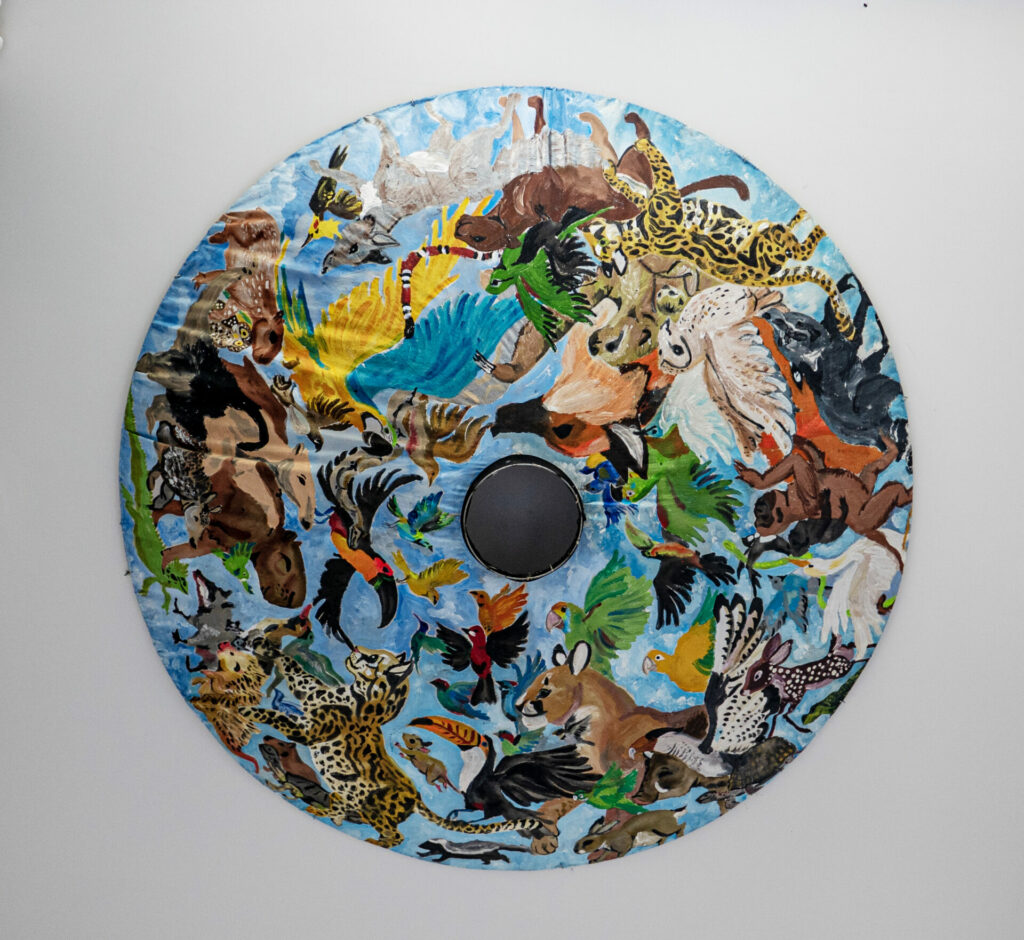
Just around the corner from the NGO is Absurda Bakery, a gay-owned business with a long queue out of the door when we arrive. It’s not long before we are inside and salivating over the sweet treats on offer, which we take away with coffees. For lunch, we walk to the restaurant Proa Cozinha Bar and are tempted by shrimp bobó, a creamy stew served with rice and farofa, which is made with cassava flour and gives the stew added texture. It is delicious. Frankly, the food, especially the local flavours, has been amazing — and we have been avoiding meat for the whole trip.
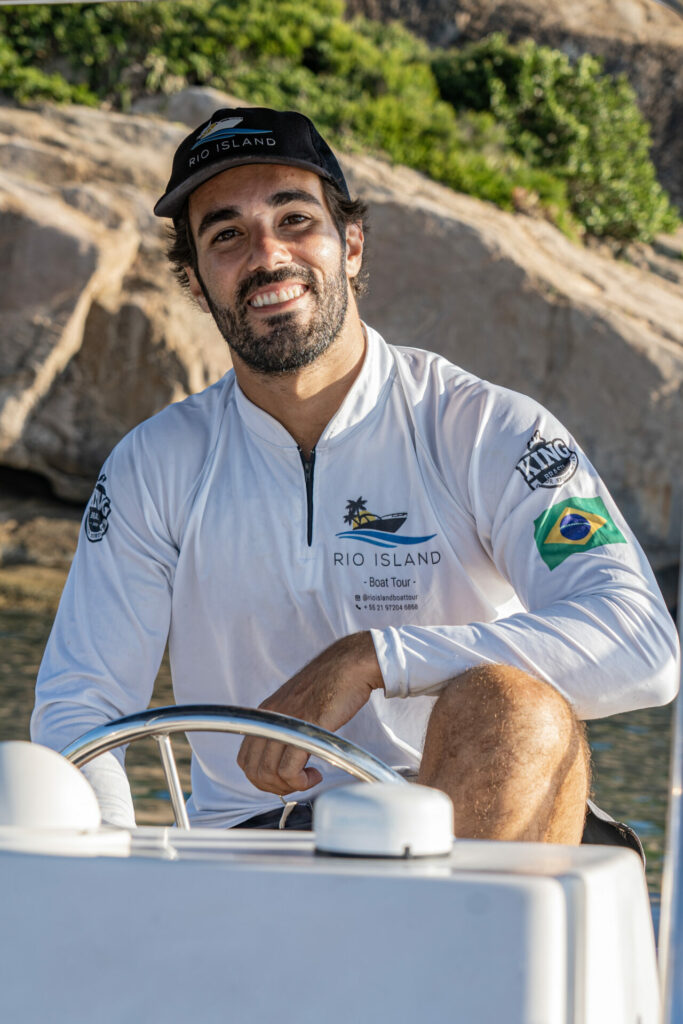
After lunch, Leigh and I take a taxi to Urca, a charming neighbourhood that’s home to Sugarloaf Mountain. But instead of taking the cable car to the top, we head for Rio Island Boat Tours. There we join our captain, Antonio, and another couple for a speedboat trip around Rio. With one hand holding my beer and the other on my hat before we hit max speed, we cruise across the water and gain an all-new perspective of the city’s skyline.
It is easy to spot the Copacabana Palace’s brilliant white façade even from a distance, and the mighty Christ the Redeemer statue which overlooks the landscape. Antonio also takes us to some nearby islands and we dive into the brisk waters to cool down. When we are dropped back, we cross the street to Bar Urca for some empadas (similar to mini pot pies), and join the locals gathering on the sea wall to enjoy the sunset.
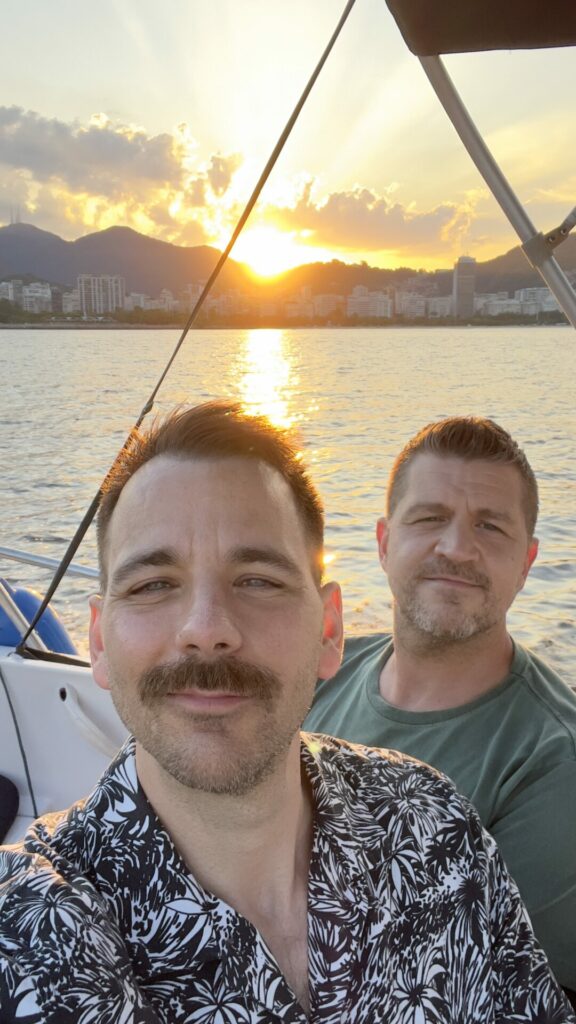
The following day, we check out of Belmond’s glamorous palace and leave the beach behind to head north to the bohemian neighbourhood of Santa Teresa and the RJ-MGallery hotel. Through the high-walled street entrance we discover a lush green garden with a path leading to reception. Indigenous art lines the walls — one is exposed brick and was constructed using whale oil, from the building’s days as a coffee farm in the 1850s.
We are given the Amy Winehouse Suite, which was christened after her stay — there are even images online of her on the balcony. As soon as we are in the room, Leigh starts tickling the keys of the grand piano as I explore the space, which is one long room with a sleeping area, a sitting room and a black slate bathroom. The suite is big enough that we have to shout to one another if we are at opposite ends.
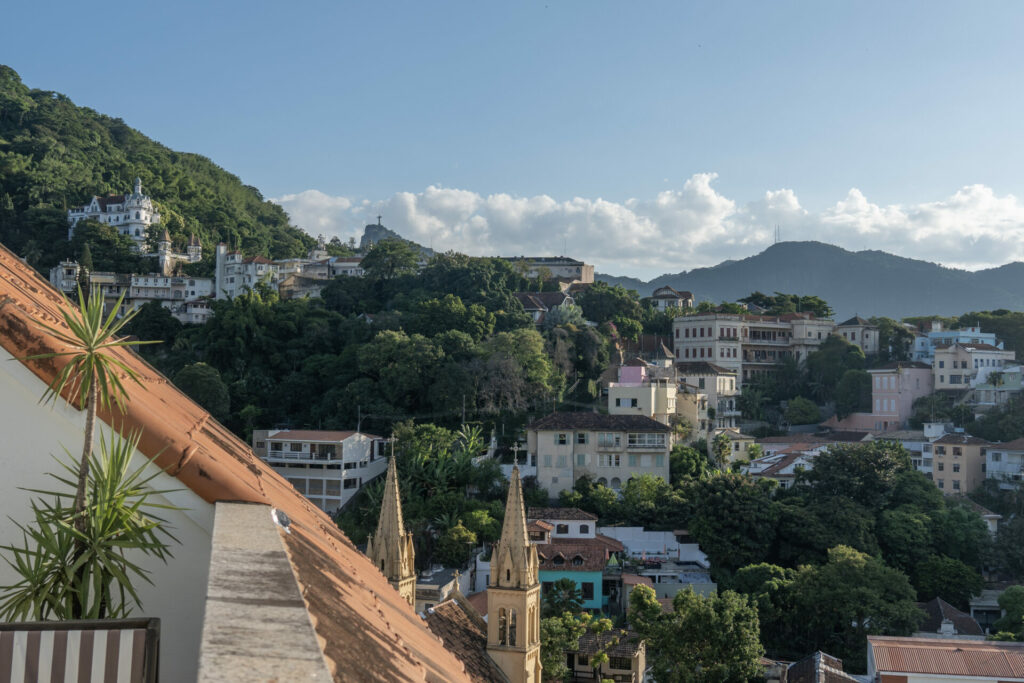
In the garden, there’s a pool with a bar and a balcony overlooking the city. A set of steps leads down to the hotel’s spa and the Térèze restaurant which offers an evening menu full of contemporary dishes like palm heart gazpacho and lychee ceviche, which I devour. In the morning, we enjoy Santa Teresa Eggs, a twist on Eggs Benedict, with caramelised onions, cane syrup and a sprinkle of coffee powder.
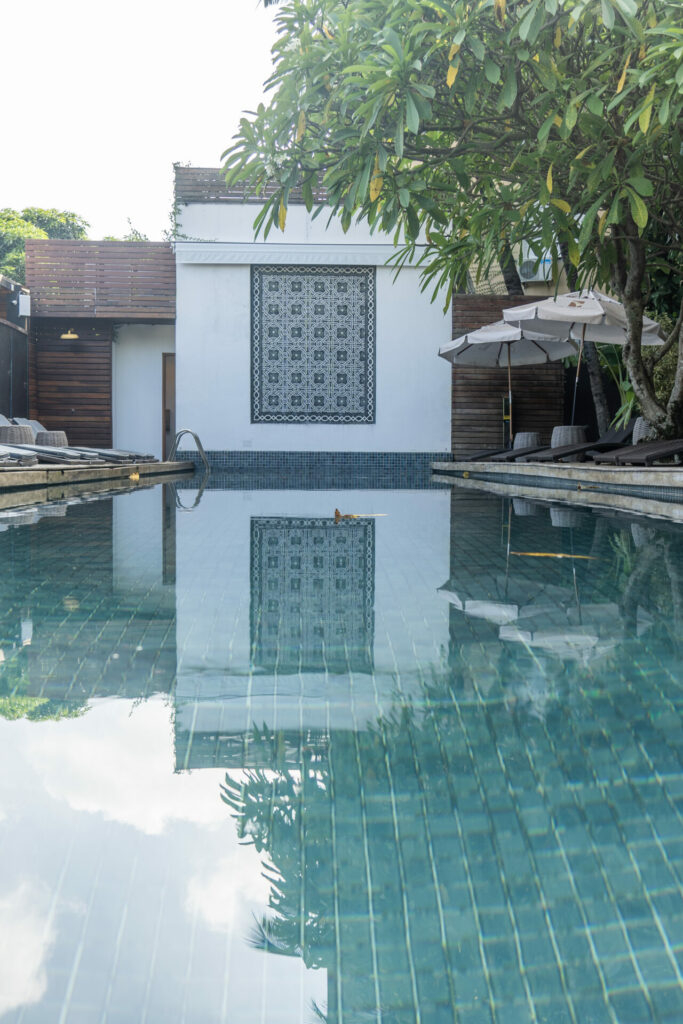
Exploring the neighbourhood, we discover Favela Hype, a café and fashion boutique with clothes by local designers. The men’s and women’s wear are mixed, which makes us a bit more adventurous with our purchases. We had a similar experience at the very queer clothing shop The Paradise (a must-visit for fashionistas, along with nearby Handred) back in Ipanema. It is a Monday and we quickly learn that many shops and restaurants don’t open every day of the week in Santa Teresa, so if you want to see the area bustling it is best to come at the weekend. Regardless, we enjoy walking the winding roads lined with ageing mansions and seeing the Blonde, the last remaining tram line in the city, whisking people around.
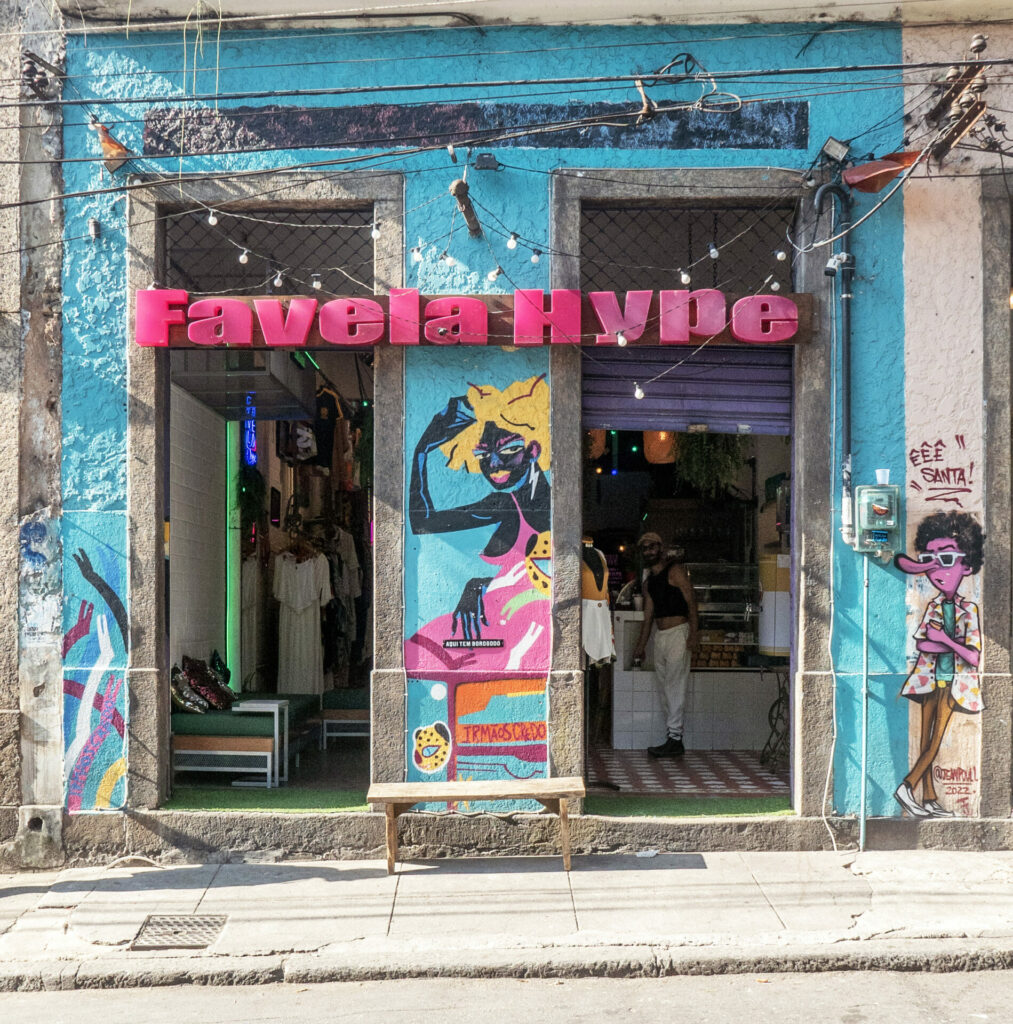
We take a trip to the Escadaria Selarón, a set of 215 steps decorated in a mosaic of broken tiles by Chilean artist Jorge Selarón, who spent 20 years working on this dedication to the Brazilian people before his death in 2013. It is a spectacular work of art but please be smarter than us and arrive early — it is selfie heaven, which makes it a tourist trap that’s hell in the heat.
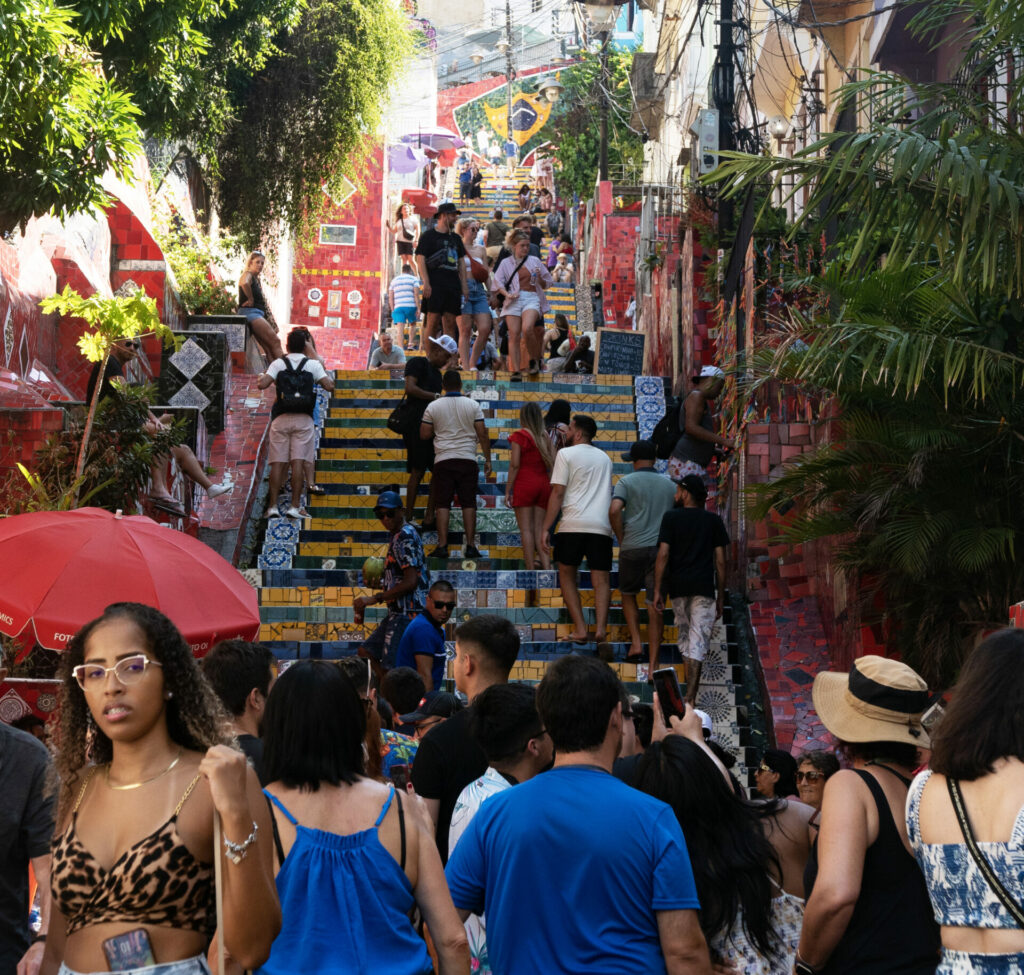
We also visit Ruins Park, the site of a mansion whose owner was famous for hosting parties for intellectuals and artists in the early 20th century. After 40 years of abandonment, the state government bought the property and turned it into a state park. From the top floor of the derelict home there are amazing views of the area including the bizarre, cone-shaped cathedral. Fans of plane-spotting can also enjoy watching flights take off from the domestic airport’s runway and jet over Guanabara Bay. It’s nice to spot an official sign at the entrance with a Pride rainbow that roughly translated says: “It is expressly forbidden to discriminate against sexual orientation or gender identity.”
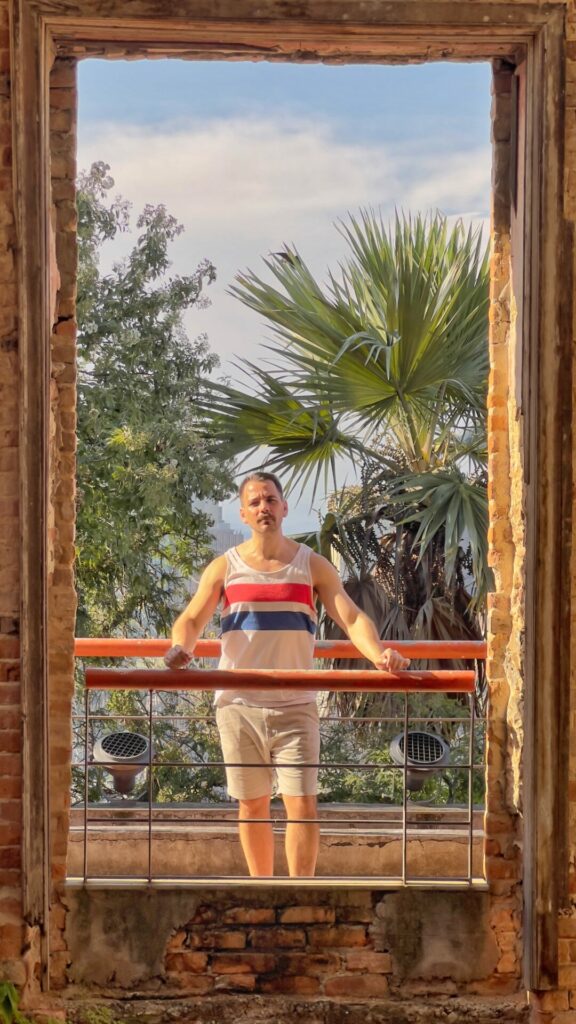
Along the same street is another mansion, but this one is very much intact and filled with a collection of modern art. The Museu Chácara do Céu is home to a collection of Brazilian and European works and during our visit had a couple well curated exhibitions.
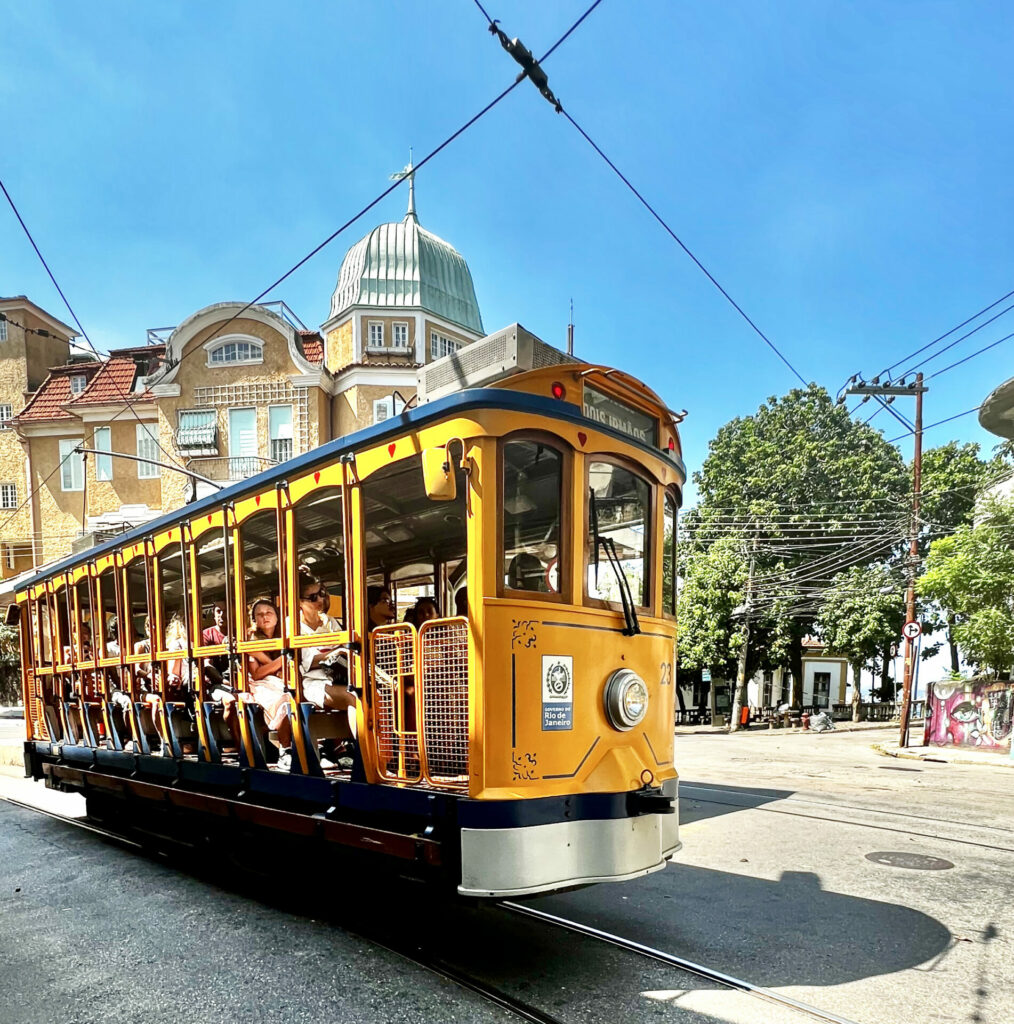
One of the main reasons visitors come to stay in Santa Teresa is to experience the samba-filled bars of neighbouring Lapa but, as we learn, the weekend is the best time for this. Luckily, Bruno and João Victor come to our aid and take us to Pedra do Sol, or Rock of Salt, in the nearby neighbourhood of Saúdi. The street is lined with vendors selling drinks — I’m pleased to spot one with a stand that has a Pride flag with the President Lula da Silva’s face on it. With caipirinha in hand and surrounded by walls covered in graffiti, we join the crowd listening to the sambistas who come here on Monday nights for the joy of the music. The rhythm takes hold and soon we are dancing under the night sky, captured by the true soul of Brazil.
Attitude enjoyed a tailor-made Brazil itinerary from bespoke luxury specialists Luxtripper. The price, including direct flights with BA to Rio de Janeiro, three nights at the Ibiti Project, two nights at the Belmond Copacabana Palace and two nights at Santa Teresa Hotel RJ-MGallery, plus private transfers between the three properties and the airport, costs £3,550 per person sharing.
